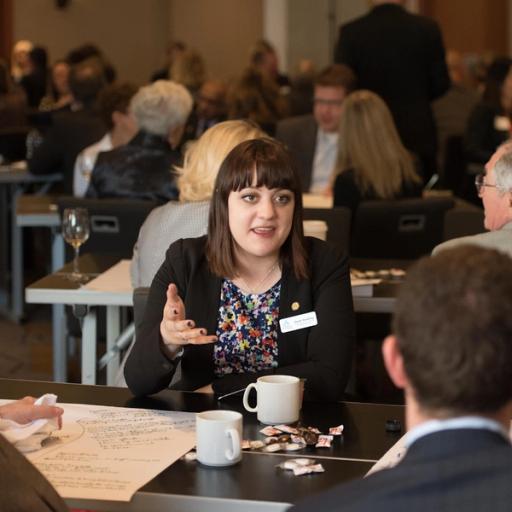June 17, 2019
June 2019 Community Investment

The Board of Governors of the Alberta Real Estate Foundation approved $374,000 in community investment projects at their recent meeting.
The Alberta Real Estate Foundation (AREF) supports initiatives that enhance the real estate industry and benefit the communities of Alberta. AREF was established in 1991 under the Alberta Real Estate Act. Since then, it has awarded over 20 million dollars in community and industry grants to 615 projects across Alberta.
Projects approved at the June meeting include:
Alternative Land Use Services (ALUS) Canada – Collaborating with our rural municipal partners in Alberta to enhance the value and resiliency of the ALUS model
ALUS Canada will collect, synthesize, and articulate the current and potential value proposition of the ALUS program in Alberta to streamline program delivery and achieve more environmental restoration and conservation. This project will strengthen the coordination within ALUS and evaluate its programs by working with partner municipalities, analyse their program success and failures and use the information to better the project delivery to better respond to the growing interest in ALUS in Alberta. This work will clearly show how ALUS helps build more resilient communities by maximizing the value of marginal land on agricultural operations that are then better able to mitigate risk of extreme weather events.
Agroforestry & Woodlot Extension Society – Enhancing Rural Property Values through Extension/Education
The project will educate and assist rural landowners in improved management of their forested lands. The project will assist the real estate industry in understanding and promoting increased property values through improved management of rural forested lands by current and future owners resulting in increasing property values of rural lands.
Capital Region Housing – Increasing Successful Tenancies: RentSmart in Alberta
Capital Region Housing is the Alberta provincial provider of RentSmart and would like to increase awareness and success of RentSmart across Alberta. This project looks to increase housing affordability in Alberta through an increased awareness and acceptance of the RentSmart tenancy education program.
Jack Long Foundation – Market / Non-Profit Partnerships for Affordable Age-In-Place Housing
The Jack Long Foundation proposes to develop a template for affordable age-in-place housing via market/affordable housing partnerships using East Village (EV) as a demonstration community. EV was chosen because of its high concentration of low income seniors, and accelerated new and re-purposed development. The project will engage relevant stakeholders who can help to resolve barriers to working partnerships between the Market and Non-Profit sectors and ultimately to increase affordable housing by integrating it with market housing projects.
Olds College, Centre for Innovation – Remediation of Water from Livestock Feeding Operations, Farmlands, and Residential Areas Using Native Wetland Plants and Associated Technology
Contamination of water is a critical problem within Agriculture and Urban areas across Alberta and western Canada from nutrient loading. Although past research has proven that wetland plants are effective in capturing nutrients to effectively clean water while harvesting off the vegetation for other productive uses such as compost for soil remediation, there is a lack of critical information to successfully carry out water remediation using native wetland plants. This knowledge gap is related to the quantification and proof of concept of the hyperaccumulation capabilities of each of the various native wetland plant species and the specific nutrients for which each plant species is most effective. Phase 1 of this project provided the quantification data relating to the hyperaccumulation properties of native wetland plants. Phase 2 will confirm the actual performance of native wetland plants and provide proof of concept by: (1) using plant data and proven floating island technology acquired from Phase 1, and (2) subjecting the plants to feedlot runoff water to prove their efficiencies and capabilities in remediating the runoff water from livestock feedlots so that the water can safely be reused for irrigation and livestock drinking water.
Red Deer River Watershed Alliance – Using Science and Storytelling to Spur Watershed Action
This project is about stories, science, and using creative communications to inspire people in central Alberta to protect watershed health. The project will engage people in central Alberta to hear their real-world water and land-based stories, complement these stories with a suite of science based messages, and ultimately develop a “Story of the Red Deer River watershed” to be shared widely using creative communications and digital media. Imagine National Geographic meets Central Alberta – it will harness the power of stories and compelling visuals to raise awareness and encourage action around key water and land-use issues.
University of Calgary, Cumming School of Medicine – Perceptions of neighbourhood walkability, bike-ability, livability, health, and vibrancy among residential real estate professionals, home buyers, and developers.
During the past few decades, there has been increased research, practice and political interest in creating healthy, vibrant neighbourhoods. Despite interest from a broad range of stakeholders on this topic, the perspectives of real estate and community development professionals are often not represented. Using a qualitative research approach, the project will explore, compare, and contrast perceptions of “walkability”, “bike-ability”, “vibrancy”, “livability”, and “healthy” as they relate to neighbourhood design among urban residential Real Estate Professionals, current homebuyers, and developers. This project looks to develop a standardized language to describe these concepts in order to enhance communications, expectations and public satisfaction around quality of life lived in urban settings.
Topic


